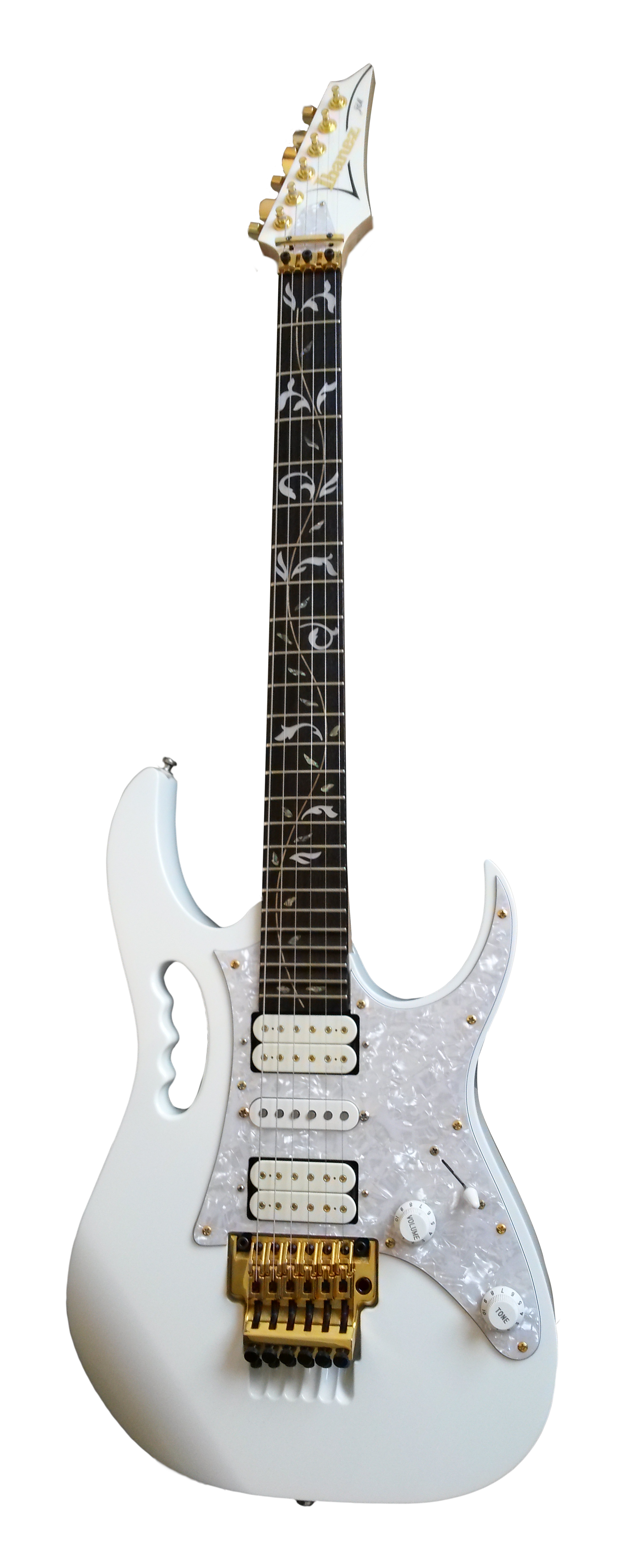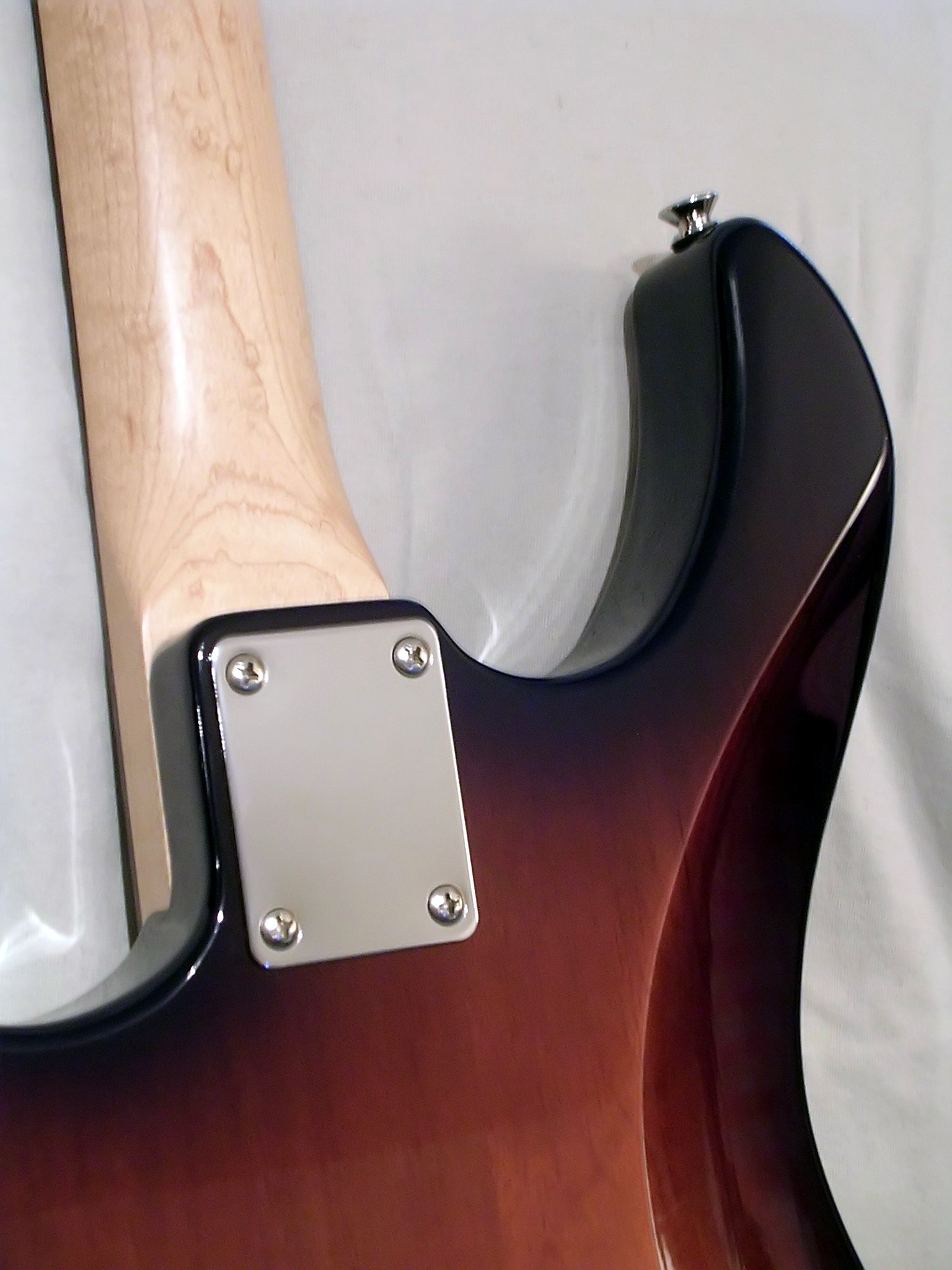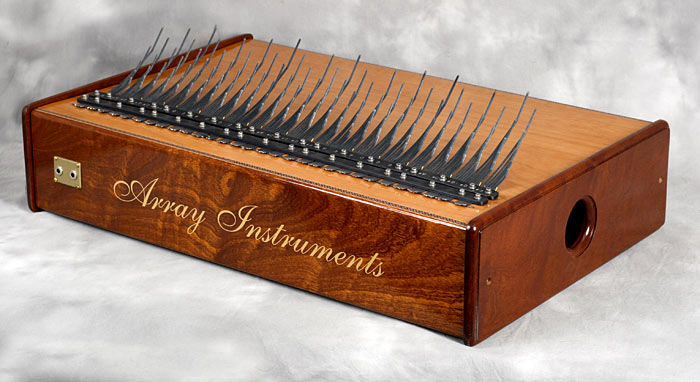|
Washburn N4
The Washburn N4 is an electric guitar model, developed in collaboration between Nuno Bettencourt, Washburn and the Seattle-based luthier Stephen Davies. Since its introduction in mid-late 1990, it became Bettencourt's primary guitar and it is marketed by Washburn as his signature model. The N4 is the flagship of the Washburn N-prefix guitar models. (N8 being an "N4 times 2" since it is a double neck guitar). The N4 features a distinctive superstrat form-factor, two humbucking pickups, floating tremolo system and the Stephens Extended Cutaway enhanced bolt-on neck joint, a patented design that allows easier player access to higher frets. Since 1990, there have been numerous versions of the N4 using various woods and hardware parts. Features Body Models have appeared using alder, padauk (paduak, padouk) and swamp ash. Korina, mahogany, sapele, and maple woods also have been used for some limited series. While all regular N4s have an oil finish, a few limited-edition mod ... [...More Info...] [...Related Items...] OR: [Wikipedia] [Google] [Baidu] |
Superstrat
Superstrat is a name for an electric guitar design that resembles a Fender Stratocaster but with differences that clearly distinguish it from a standard Stratocaster, usually to cater to a different playing style. Differences typically include more pointed, aggressive-looking body and neck shapes, different woods, increased cutaways (resulting in deeper horns) to facilitate access to the higher frets, increased number of frets, contoured heel facilitating easier higher fret access, usage of humbucking pickups and locking vibrato systems, most commonly the Floyd Rose. There is no formal definition of a superstrat; the categorization is still largely left to popular opinion and depends greatly on the artist(s) associated with a particular model and how it is marketed. History Origin in custom modifications With the increased popularity of heavy metal music during the early 1980s, guitarists began seeking out guitars more suited to the new style, both in terms of looks (more ... [...More Info...] [...Related Items...] OR: [Wikipedia] [Google] [Baidu] |
Bill Lawrence (guitar Maker)
Bill Lawrence (born Willi Lorenz Stich; March 24, 1931 – November 2, 2013) was a pickup and guitar designer He was born in Wahn, Cologne, Germany and began his musical career in the 1950s as a jazz guitarist, performing under the name Billy Lorento. He died in Southern California, United States. As a musician, Lawrence created pickups that he felt best suited his needs and performance style, and went on to work with Framus and became an endorser, including such models as the "Billy Lorento" 5/120. He was also an endorser for Fender in Europe. Moving to the United States, Lawrence designed pickups and assisted in electric guitar design for Fender, Gibson, Peavey and other companies. While at Gibson from 1968-1972, Lawrence helped design the "super-humbucker" pickup and the L6-S. He helped redesign the electronics of the SG and contributed significantly to the S-1 and Marauder, as well as to some bass models, like the Ripper Ripper or The Ripper may refer to: People ... [...More Info...] [...Related Items...] OR: [Wikipedia] [Google] [Baidu] |
Bolt-on
Bolt-on neck is a method of guitar (or similar stringed instrument) construction that involves joining a guitar neck and body using screws or bolts, as opposed to glue and joinery as with set-in neck joints. Methods The "bolt-on" method is used frequently on solid body electric guitars and on acoustic flattop guitars. In the typical electric guitar neck joint, the body and neck cross in horizontal plane, the neck is inserted in a pre-routed "pocket" in the body, and they are joined using four or sometimes three (rarely, five or more) screws. As the pressure of screw heads damages the wood surfaces, and the undistributed stress could put the instrument body at structural risk, typically a rectangular metal plate (or a pair of smaller plates) is used to secure the joint and re-distribute the screw pressure more evenly. Such a plate is usually criticized for making playing on top frets uncomfortable, so manufacturers sometimes employ some kind of more intricate method to hide a ... [...More Info...] [...Related Items...] OR: [Wikipedia] [Google] [Baidu] |
Ebony
Ebony is a dense black/brown hardwood, coming from several species in the genus ''Diospyros'', which also contains the persimmons. Unlike most woods, ebony is dense enough to sink in water. It is finely textured and has a mirror finish when polished, making it valuable as an ornamental wood. The word ''ebony'' comes from the Ancient Egyptian ', through the Ancient Greek ('), into Latin and Middle English. Species Species of ebony include ''Diospyros ebenum'' (Ceylon ebony), native to southern India and Sri Lanka; '' D. crassiflora'' (Gabon ebony), native to western Africa; and '' D. celebica'' (Sulawesi ebony), native to Indonesia and prized for its luxuriant, multi-colored wood grain. Mauritius ebony, '' D. tessellaria'', was largely exploited by the Dutch in the 17th century. Some species in the genus yield an ebony with similar physical properties, but striped rather than the even black of ''D. ebenum''. Uses Ebony has a long history of use, and carved pieces have be ... [...More Info...] [...Related Items...] OR: [Wikipedia] [Google] [Baidu] |
Mourning Widows
Mourning Widows was a musical project led by former Extreme guitarist Nuno Bettencourt. The band was formed in 1997, and they released two albums during their career. Despite not being widely released in the United States, both albums were successful in Japan. Bettencourt formed the band after the moderate success of his 1996 solo album, '' Schizophonic''. The band's sound went back to a funkier guitar-driven rock reminiscent of Extreme, while still having post-grunge and alternative influences. After the end of the Furnished Souls For Rent tour, in 2001, Nuno decided to dismiss the band and released a record as Population 1, mostly recorded by himself. That became the name of his new band too, which would later become DramaGods. Discography * ''Mourning Widows'' (1998) * '' Furnished Souls for Rent'' (2000) Band members * Nuno Bettencourt - guitars, vocals, producer, drums on first record (credited as "Billy Vegas") * Donovan Bettencourt - bass * Jeff Consi - drums from the ... [...More Info...] [...Related Items...] OR: [Wikipedia] [Google] [Baidu] |
Maple
''Acer'' () is a genus of trees and shrubs commonly known as maples. The genus is placed in the family Sapindaceae.Stevens, P. F. (2001 onwards). Angiosperm Phylogeny Website. Version 9, June 2008 nd more or less continuously updated since http://www.mobot.org/MOBOT/research/APweb/. There are approximately 132 species, most of which are native to Asia, with a number also appearing in Europe, northern Africa, and North America. Only one species, ''Acer laurinum'', extends to the Southern Hemisphere.Gibbs, D. & Chen, Y. (2009The Red List of Maples Botanic Gardens Conservation International (BGCI) The type species of the genus is the sycamore maple, '' Acer pseudoplatanus'', the most common maple species in Europe.van Gelderen, C. J. & van Gelderen, D. M. (1999). ''Maples for Gardens: A Color Encyclopedia'' Maples usually have easily recognizable palmate leaves ('' Acer negundo'' is an exception) and distinctive winged fruits. The closest relatives of the maples are the horse c ... [...More Info...] [...Related Items...] OR: [Wikipedia] [Google] [Baidu] |
Sapele
''Entandrophragma cylindricum'' is a tree of the genus ''Entandrophragma'' of the family ''Meliaceae''. It is commonly known as sapele or sapelli ( ) or sapele mahogany, as well as aboudikro, assi, and muyovu. Origin of the name The name ''sapele'' comes from that of the city of Sapele in Nigeria, where there is a preponderance of the tree. African Timber and Plywood (AT&P), a division of the United Africa Company, had a factory at this location where the wood, along with ''Triplochiton scleroxylon'', ''Obeche'', mahogany, and Khaya was processed into timber which was then exported from the Port of Sapele worldwide. The name of the city itself is said to be an anglicisation of the Urhobo word Uriapele, commemorating a local deity. It is believed the British colonial authorities changed the name of the then hamlet to Sapele as it was easier to pronounce. Description ''Entandrophragma cylindricum'' is native to tropical Africa. There are protected populations and felling restr ... [...More Info...] [...Related Items...] OR: [Wikipedia] [Google] [Baidu] |
Mahogany
Mahogany is a straight-grained, reddish-brown timber of three tropical hardwood species of the genus ''Swietenia'', indigenous to the AmericasBridgewater, Samuel (2012). ''A Natural History of Belize: Inside the Maya Forest''. Austin: University of Texas Press. pp. 164–165. . and part of the pantropical chinaberry family, Meliaceae. Mahogany is used commercially for a wide variety of goods, due to its coloring and durable nature. It is naturally found within the Americas, but has also been imported to plantations across Asia and Oceania. The mahogany trade may have begun as early as the 16th century and flourished in the 17th and 18th centuries. In certain countries, mahogany is considered an invasive species. Description The three species are: *Honduran or big-leaf mahogany ('' Swietenia macrophylla''), with a range from Mexico to southern Amazonia in Brazil, the most widespread species of mahogany and the only genuine mahogany species commercially grown today. Illegal l ... [...More Info...] [...Related Items...] OR: [Wikipedia] [Google] [Baidu] |
Swamp Ash
Swamp ash is a common name for several North American trees in the genus ''Fraxinus'' which may grow in swamps and other wetlands. The wood of swamp ashes is relatively low in density and is used in the construction of musical instruments, particularly electric guitars. Swamp ash may refer to: *''Fraxinus caroliniana'', native to the southeastern United States and Cuba *''Fraxinus nigra'', native to the northeastern United States and eastern Canada *''Fraxinus pennsylvanica'', broadly distributed in North America east of the Rocky Mountains , climate change In common usage, climate change describes global warming—the ongoing increase in global average temperature—and its effects on Earth's climate system. Climate change in a broader sense also includes previous long-term changes to E ... is creating a shortage of swamp ash suitable for making electric guitars. References Plant common names {{Lamiales-stub ... [...More Info...] [...Related Items...] OR: [Wikipedia] [Google] [Baidu] |





.jpg)
